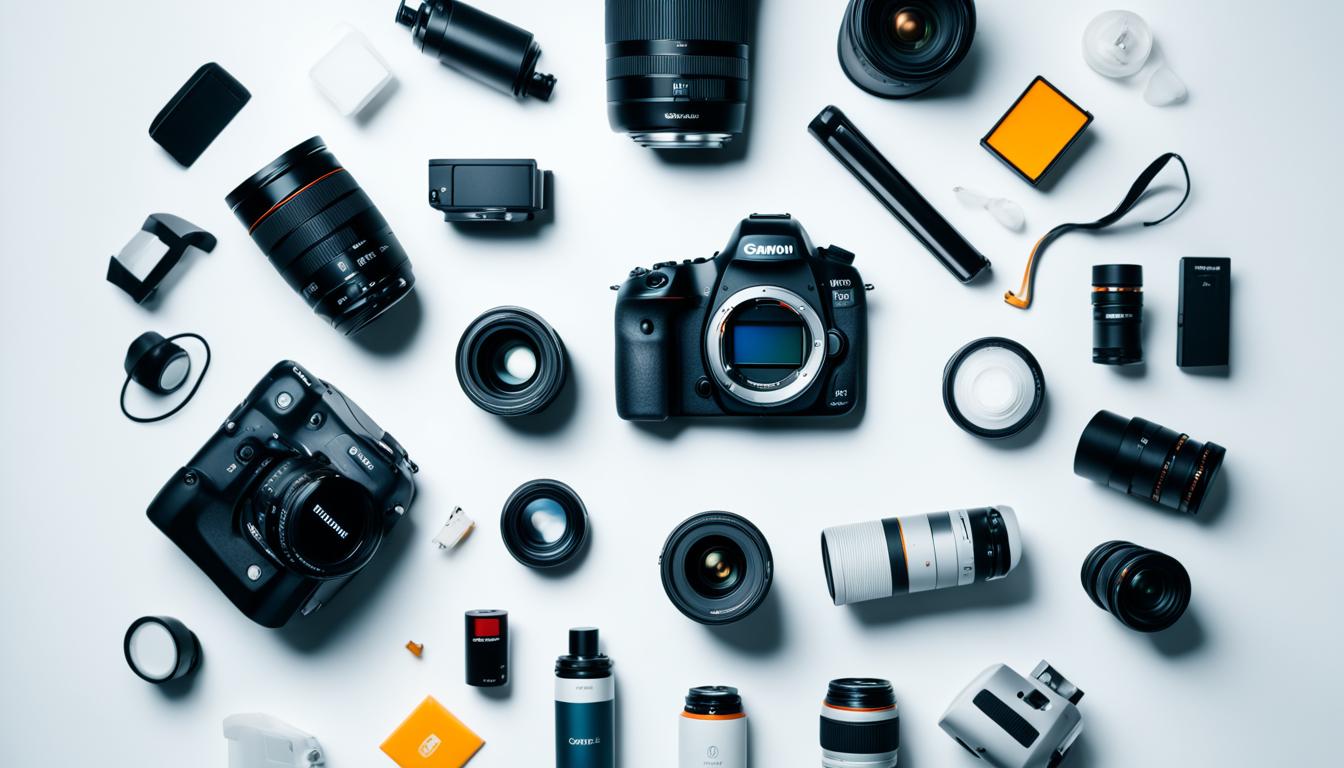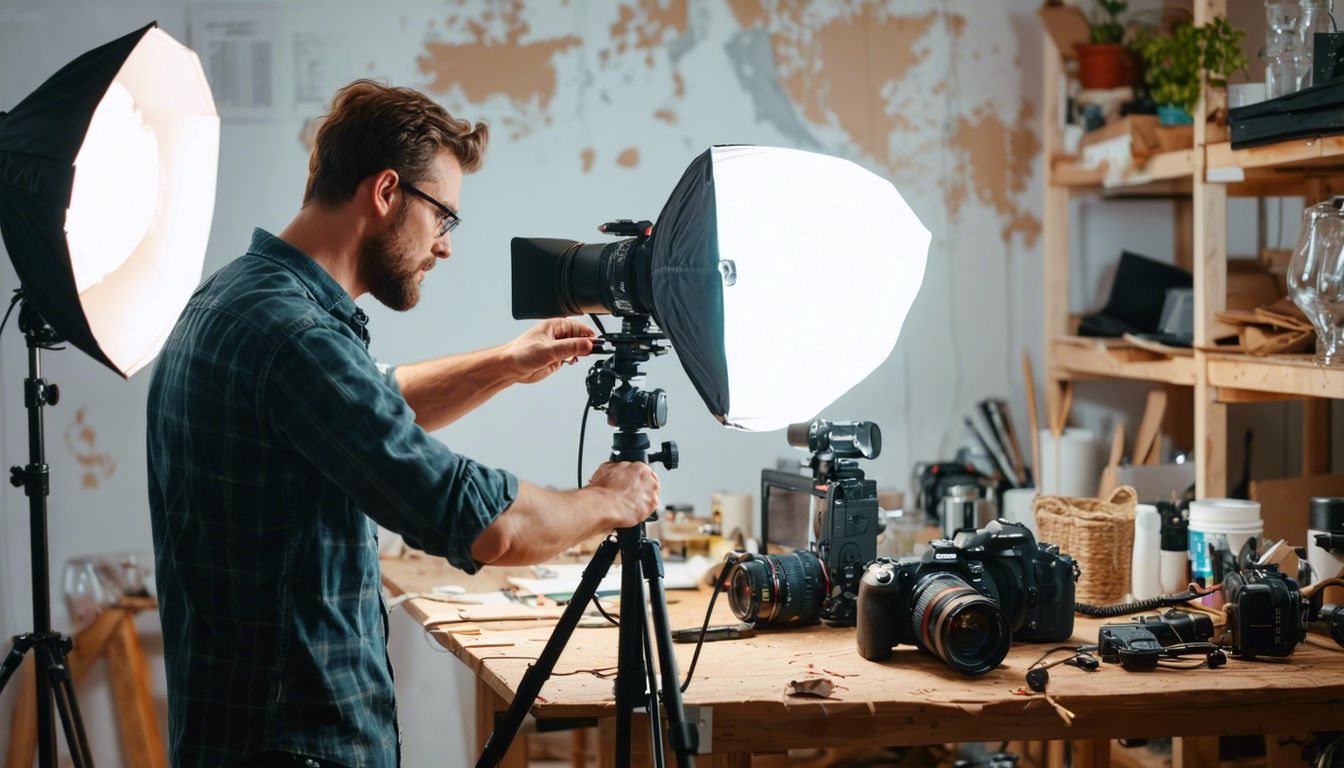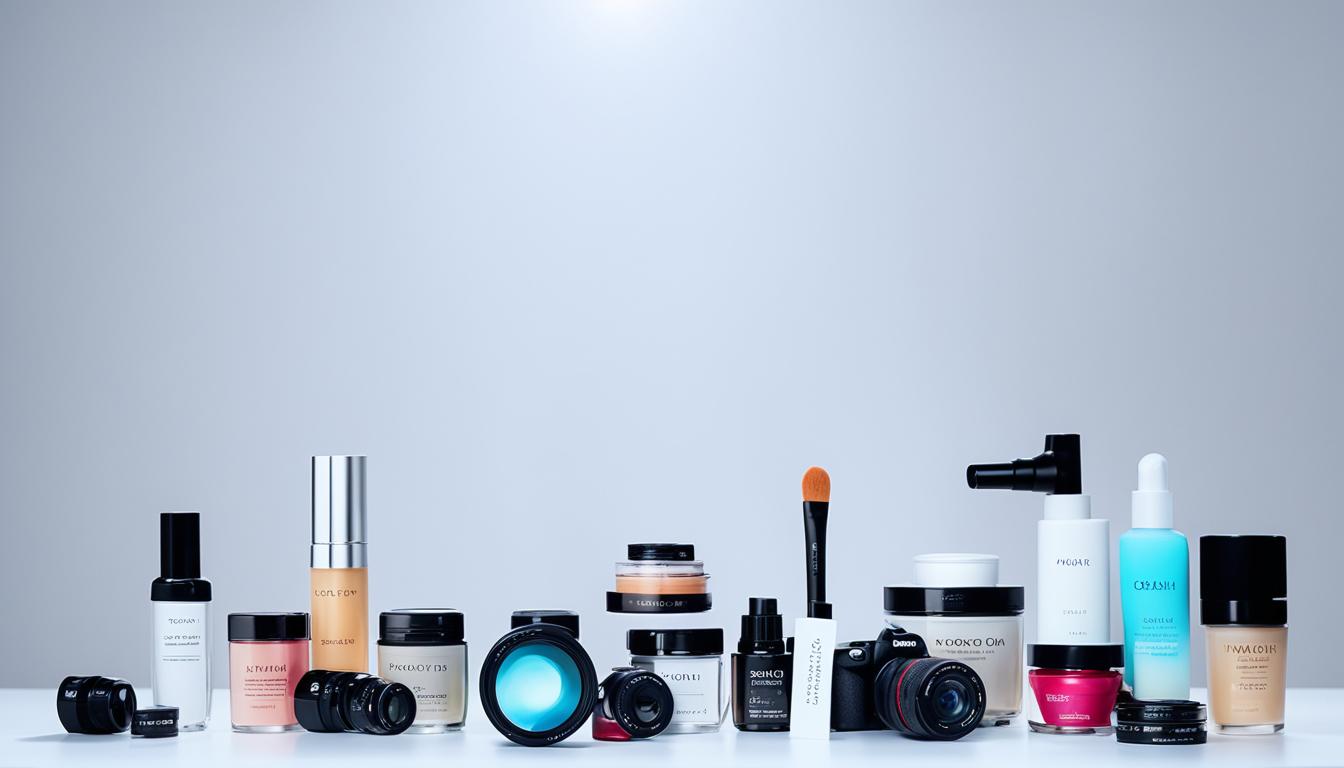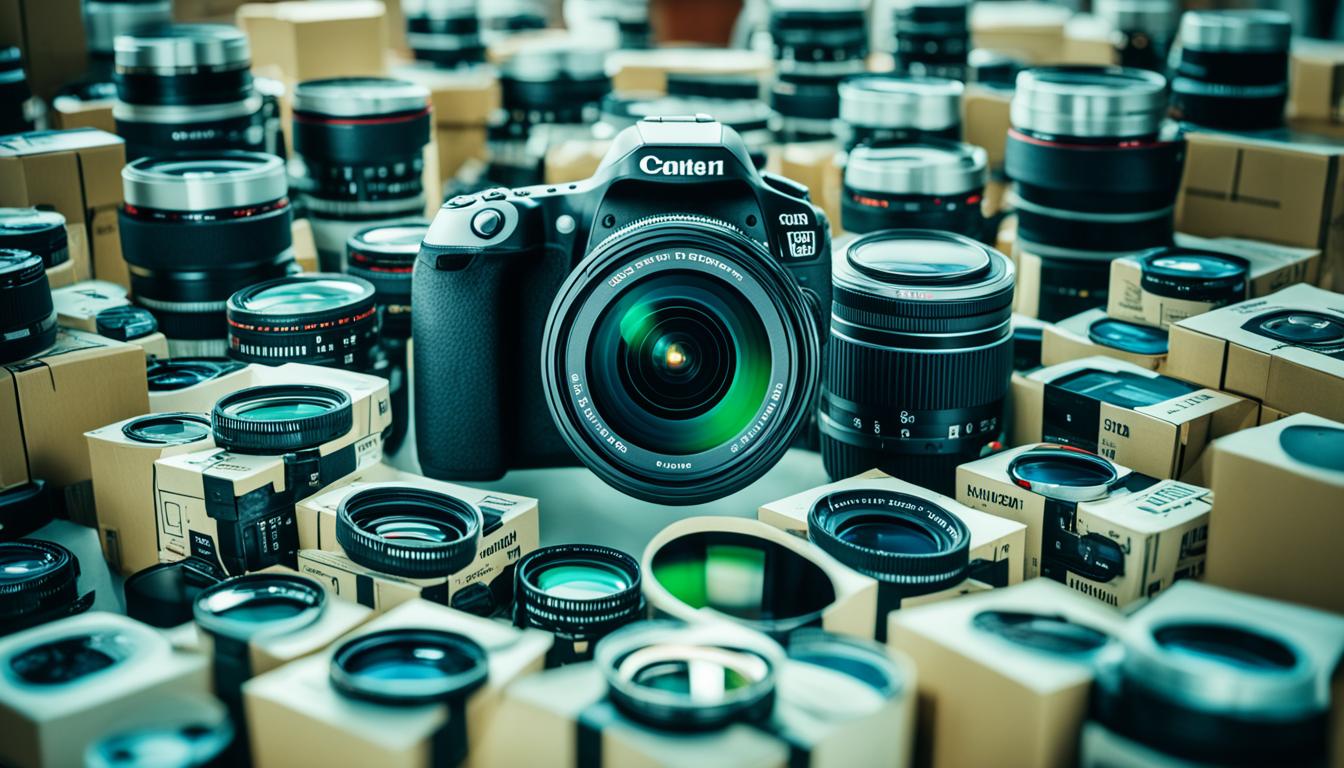Welcome to our comprehensive guide on product photography! Whether you’re a beginner looking to learn the basics or a seasoned photographer wanting to refine your skills, understanding the fundamentals is the key to capturing stunning product images. In this article, we’ll cover essential tips, techniques, and essentials to help you master the art of product photography.
Key Takeaways:
- Understanding the fundamentals is crucial for capturing professional product images.
- Composition, exposure, focus, and white balance are essential aspects of product photography.
- Mastering lighting techniques and understanding the psychology of color are also important for impactful product photography.
- FDS Masterclass offers in-depth training on the fundamentals of product photography, covering all these aspects and more.
- By mastering the basics, you can elevate your skills and become a professional product photographer.
The Importance of Composition in Product Photography
Composition is a fundamental aspect of creating visually appealing product photographs. When done right, it can elevate an ordinary image into a captivating masterpiece. In product photography, composition refers to how the various elements of an image are arranged within the frame to create balance, harmony, and visual interest.
By utilizing composition techniques such as the rule of thirds, leading lines, and framing, photographers can enhance the overall look and impact of their product images. Let’s take a closer look at each of these techniques:
- Rule of Thirds: The rule of thirds involves dividing the image frame into nine equal parts using two horizontal lines and two vertical lines. By placing the key elements of the product along these lines or on their intersections, you create a more visually pleasing and balanced composition. This technique draws the viewer’s eye to the focal point of the image.
- Leading Lines: Leading lines are lines within the image that direct the viewer’s attention towards the main subject or focal point. They can be actual lines in the scene or implied lines created by the arrangement of elements. By incorporating leading lines, you can guide the viewer’s eye and create a sense of depth and movement in your product photographs.
- Framing: Framing involves using elements within the image to frame the main subject, drawing attention to the product and adding a sense of context. This can be achieved by positioning the product within a doorway, window, or any other element that acts as a frame. Framing adds visual interest and can create a more immersive and impactful experience for the viewer.
Understanding how to arrange elements within the frame to guide the viewer’s eye and evoke specific emotions is key to creating compelling product images. Using composition techniques like the rule of thirds, leading lines, and framing allows photographers to create visually stunning product photographs that capture attention and leave a lasting impression.
The Role of Exposure in Product Photography
In product photography, achieving proper exposure is crucial for capturing high-quality images that showcase the details and colors of the products accurately. Understanding the role of the exposure triangle, which comprises aperture, shutter speed, and ISO, is essential for achieving the desired exposure.
The exposure triangle is a framework that photographers use to balance the amount of light entering the camera. Here’s how each element of the exposure triangle contributes to the overall exposure:
- Aperture: The aperture refers to the opening in the camera lens that controls the amount of light reaching the image sensor. By adjusting the aperture, photographers can control the depth of field, determining how much of the product is in focus.
- Shutter Speed: Shutter speed controls the duration for which the camera’s shutter remains open. It influences the amount of light that enters the camera and affects the motion blur in the image. Faster shutter speeds freeze the action, while slower shutter speeds create long exposures.
- ISO: ISO determines the camera’s sensitivity to light. Higher ISO settings make the camera more sensitive to light, allowing you to shoot in low-light conditions. However, higher ISO values can introduce digital noise into the image.
By manipulating these settings, photographers can achieve the desired exposure, whether it’s a well-lit product with crisp details or a creatively lit scene with intentional shadows. Understanding the interplay between aperture, shutter speed, and ISO empowers photographers to capture visually striking product photographs.
FDS Masterclass offers comprehensive training on exposure and the exposure triangle. We teach photographers how to manipulate these settings effectively, enabling them to control the amount of light entering the camera and capture captivating product images. The mastery of exposure is a fundamental aspect of product photography and plays a vital role in creating visually stunning photographs.

Mastering Focus in Product Photography
Achieving a sharp and well-focused image is essential in product photography. The ability to capture every detail with precision showcases the quality and professionalism in your work. In this section, we will explore various focusing techniques that will help you elevate your product images to the next level.
Focusing Techniques
When it comes to focusing, photographers have two primary options: manual focus and autofocus. Each technique has its advantages, and understanding how and when to use them can greatly impact the outcome of your product photos.
- Manual Focus: With manual focus, you have full control over the focal point of your image. This technique is particularly useful when photographing products with intricate details or when shooting in challenging lighting conditions. It allows you to precisely adjust the focus until you achieve the desired sharpness.
- Autofocus: Autofocus is a convenient option that automatically adjusts the focus based on the camera’s built-in algorithms. It is a great choice when shooting fast-moving subjects or when you need to quickly capture multiple product images. Modern cameras often offer various autofocus modes, such as single-point or continuous autofocus, giving you flexibility in different shooting scenarios.
Depth of Field
The depth of field (DOF) is another critical aspect of focus in product photography. It refers to the range of distances within an image that appear acceptably sharp. Understanding how to control the DOF allows you to create images with a shallow or extended focus area, depending on the desired effect.
Mastering focus and depth of field enables you to guide the viewer’s attention, emphasizing specific product details and creating visual impact that captures their interest.
Focus Stacking
In situations where you want to achieve a large depth of field and ensure sharpness throughout the entire product, focus stacking is a powerful technique. It involves capturing multiple images, each focused on a different part of the product, and then blending those images together in post-processing to create a final photo with impeccable focus.
By utilizing focus stacking, you can overcome the limitations of your lens’s maximum aperture and achieve superior sharpness across the entire product.
The FDS Masterclass provides detailed instruction on these focusing techniques, empowering you to capture professional-level product images that stand out.
Understanding the Importance of White Balance in Product Photography
In product photography, achieving accurate and vibrant color reproduction is essential to showcase products in their truest form. This is where white balance plays a crucial role. White balance refers to the adjustment of colors in an image to ensure they appear natural and true to life.
At FDS Masterclass, we understand the significance of white balance in product photography. Our comprehensive training provides aspiring photographers with the knowledge and skills to set the correct white balance and achieve optimal color accuracy in their product images.
When capturing product photos, incorrect white balance can lead to undesirable color casts, which distort the perception of the item. These color casts can make products appear warmer or cooler than they actually are, resulting in an inaccurate representation. By mastering white balance, photographers can eliminate these color casts and capture products with precise color accuracy.

Understanding the impact of white balance on product photography is crucial for creating visually appealing images that accurately reflect the true colors of the products. With FDS Masterclass, photographers gain in-depth knowledge and hands-on practice to achieve the desired white balance in their product photographs.
Mastering Lighting in Product Photography
When it comes to photography, lighting is undeniably one of the most critical elements. In the realm of product photography, lighting plays an even more significant role. The right lighting setup can make or break your product shots, influencing the mood, highlighting key features, and creating that polished, professional look.
In our FDS Masterclass, we delve deep into the world of lighting setups, allowing you to explore various options and techniques. Whether you prefer working with natural light, artificial light, or studio lighting, we’ve got you covered.
With the guidance of our expert instructors, you’ll learn how to manipulate light to your advantage. By strategically placing light sources, you can accentuate the texture of a product, create shadows for depth and dimension, and set the desired mood. Whether you’re aiming for a soft, ethereal feel or a bold, dramatic look, mastering lighting techniques is the key to achieving stunning product images.
Ready to elevate your product photography skills with our comprehensive lighting training? Join our FDS Masterclass and unlock the potential of your creative vision.
| Lighting Setup | Description |
|---|---|
| Natural Light | Utilize the sun’s natural rays to create soft, diffused lighting, perfect for showcasing the natural beauty of your products. |
| Artificial Light | Create controlled and precise lighting using artificial light sources such as strobes, continuous lights, or speedlights. |
| Studio Lighting | Design a fully optimized lighting setup in a controlled studio environment to achieve consistent and professional-looking product images. |
Conclusion
Understanding the fundamentals of product photography is the first step towards capturing high-quality images that showcase your products in the best possible light. At FDS Masterclass, we offer comprehensive training on the basics of product photography, equipping you with the knowledge and skills to elevate your photography game and become a professional product photographer.
Our training covers essential aspects such as composition, exposure, focus, white balance, and lighting, providing you with a solid foundation to create visually striking product images. By mastering these fundamentals, you’ll be able to capture every detail, highlight the unique features of your products, and create images that engage and entice your audience.
Whether you’re a beginner looking to learn product photography basics or an experienced photographer aiming to refine your skills, our courses are designed to meet your needs. With a combination of theoretical knowledge and practical exercises, our instructors will guide you through the intricacies of product photography, empowering you to unleash your creativity and produce professional-grade images.
So, if you’re ready to take your product photography skills to the next level, join us at FDS Masterclass and embark on a journey that will transform you into a skilled and confident product photographer. Don’t miss the opportunity to elevate your skills and make a mark in the dynamic world of product photography.
FAQ
What are the essential fundamentals to understand in product photography?
The essential fundamentals to understand in product photography include composition, exposure, focus, white balance, and lighting.
What is composition and why is it important in product photography?
Composition refers to the arrangement of elements within an image. It is important in product photography because it helps create visually appealing and compelling product images. Techniques such as the rule of thirds, leading lines, and framing can enhance the overall look of the image.
What is exposure and how does it impact product photography?
Exposure refers to the amount of light that enters the camera and affects the brightness and detail in a photograph. Understanding the exposure triangle, which consists of aperture, shutter speed, and ISO, is crucial for achieving the right exposure in product photography.
How can I achieve sharp, well-focused product images?
Achieving a sharp, well-focused image in product photography involves using proper focusing techniques such as manual focus, autofocus, depth of field, and focus stacking. These techniques ensure that every detail of the product is captured with precision.
Why is white balance important in product photography?
White balance is essential in product photography as it ensures color accuracy and prevents unwanted color casts that can distort the perception of the item. Setting the correct white balance helps capture products in their true hues.
How does lighting impact product photography?
Lighting plays a significant role in product photography. It helps highlight product features, create shadows for depth, and set the desired mood. Understanding different lighting setups, including natural light, artificial light, and studio lighting, allows photographers to manipulate light effectively.
Why is it important to understand the fundamentals of product photography?
Understanding the fundamentals of product photography is crucial for capturing high-quality product images. By mastering these fundamentals, photographers can elevate their skills and become professionals in the dynamic world of product photography.
How Can Mastering Product Photography Basics Help in Pricing and Marketing in the Photography Business?
Mastering product photography pricing marketing tips can greatly enhance a photographer’s business. By showcasing products in the best light, photographers can demand higher prices for their services. Quality product images can also be used in marketing materials to attract new clients and boost sales.




